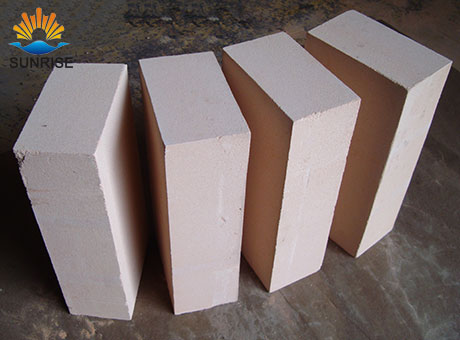Plasticity, dispersibility, bonding and sinterability are the main characteristics of the clay refractory brick process. These properties are mainly determined by the mineral composition and particle composition of the clay and are closely related to the manufacturing process of the clay refractory. The clays which interact with each other and have large dispersibility have good bonding and plasticity, and are also favorable for sintering. Let's take a look at Tianyang Refractory Company to introduce the process characteristics of clay refractory bricks in detail.
(1) Plasticity. It refers to the fact that the mud mass formed by clay and water is easily deformed under the action of external force but does not break, and retains its deformed shape after the external force is released without returning to its original state. The plasticity of the combined clay has a great influence on the forming properties of the refractory mud.
The plasticity of clay is usually expressed by plasticity index and plasticity index. The plasticity index method is a method of measuring the strength and weakness of an indirect index value indicating the difference between the upper limit and the lower limit of the amount of water (the range of change in water content) when the clay is in a plastic state. The plasticity index method is a direct method for determining the plasticity of clay. It is a mud ball with a certain diameter. When an external force acts, it deforms and begins to crack. The degree of plasticity is expressed by the product of stress (deformation force) and strain (degree of deformation). One way.
The strength of clay plasticity depends on the mineral composition of the clay, the fineness and quantity of the particles, and the nature of the liquid phase. In production, methods for increasing clay plasticity include: removing non-plastic impurities such as quartz; fine grinding of clay to increase its dispersion; adding appropriate amount of plastic binder (such as sulfite pulp waste); vacuum treatment and Difficult to mud and other methods.

(2) Dispersibility. Reflects the nature of the degree of dispersion of the clay. It is usually expressed by its particle composition or specific surface area. Clay is a highly dispersible material, generally no larger than 10 microns. The process properties of clays are primarily dependent on the amount of particles less than 2 microns. Usually, the coarse fraction (greater than 0.05 mm) contained in the clay is a concentrated portion of impurities (such as quartz sand, pyrite and mother salt residues, etc.). Soft clays are highly dispersible materials, while hard or semi-hard clays are difficult to disperse in water and require long-term grinding to disperse them.
(3) Combination. It refers to the ability of clay to bond non-plastic materials, even if the formed brick can maintain its shape and has certain mechanical strength properties. In general, the higher the degree of dispersion of the clay, the greater the specific surface area and the stronger the binding. But it also depends on the type, composition, particle composition and characteristics of the clay mineral. In actual production, the plasticity of clay is usually used to judge the strength of its bonding properties.
(4) Sinterability of clay refractory bricks. When the clay is calcined at a suitable high temperature, it can become a dense and hard sinter. At this time, the clay shrinkage volume shrinkage is minimized and the water absorption rate is the lowest. This property of clay is called sinterability.
During the calcination process, a series of physicochemical changes, such as decomposition, compounding, recrystallization, etc., occur with the volume change. This has an important impact on the process and properties of clay products. The change in the heating process of the clay is essentially the heating change of the kaolinite mineral and the physicochemical reaction between the kaolinite and the impurities.
If you are interested in Sunrise Refractory clay refractory bricks, please send us an email for more details and the latest quotation.

